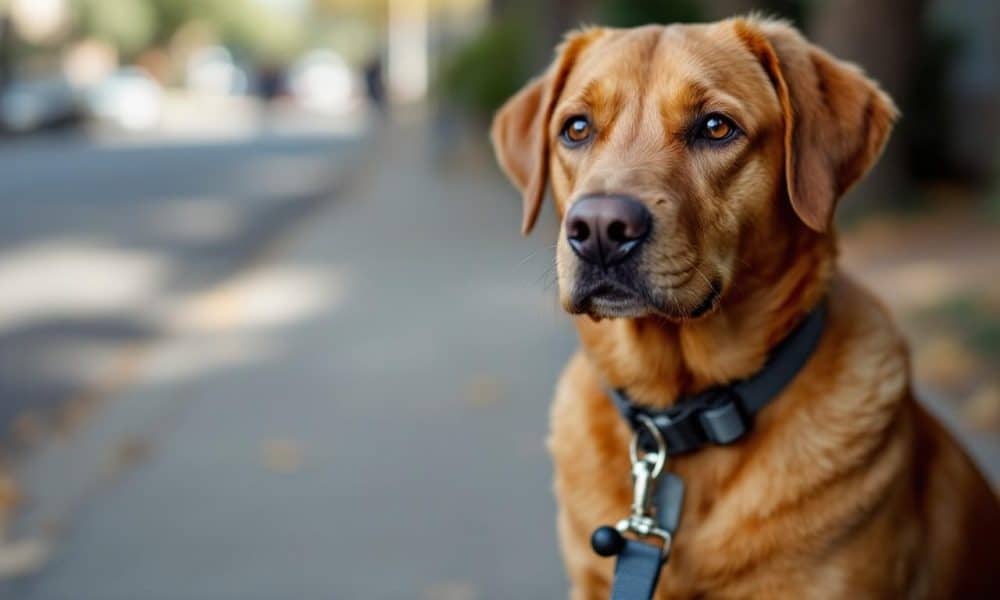Introduction to Leash Training
At DogingtonPost, we know that leash training is a fundamental skill for every dog owner. Mastering this essential technique ensures your furry friend’s safety and compliance with local laws. Our comprehensive guide offers practical tips for leash training a dog, helping you transform chaotic walks into enjoyable bonding experiences.
Why Leash Training Matters
Safety First
Leash training is not just a convenience-it’s a critical aspect of responsible dog ownership. The primary goal of leash training is safety. A dog that walks well on a leash has a lower risk of darting into traffic, chasing after other animals, or getting into confrontations with other dogs. This significantly reduces the chance of accidents and injuries for both your furry friend and yourself.
Legal Compliance and Public Etiquette
Many cities and towns enforce leash laws that require dogs to be on a leash in public spaces. These laws protect both dogs and people. Violating these laws can result in fines and, in some cases, more severe consequences. Leash training your dog doesn’t just keep you on the right side of the law-it shows respect for your community and fellow dog owners.
A Stronger Bond
Leash training offers more than just control; it provides an opportunity to strengthen your relationship with your dog. Regular walks on a leash create structured time for you and your pet to interact and communicate. As you navigate your environment together, you reinforce your role as a leader and build trust with your canine companion.
Stress Reduction for Both Ends of the Leash
A dog that walks calmly on a leash turns outings into a joy rather than a chore. You’ll find yourself looking forward to walks (instead of dreading them). This positive association often leads to more frequent outings, which benefits both you and your dog’s physical and mental health. Research suggests that physical activity can have a positive effect on dog behavior and reduce fearfulness.
Opening Up a World of Adventures
Leash training is an investment in your dog’s future. It unlocks a world of possibilities for shared adventures and experiences. Whether you want to explore new hiking trails or simply enjoy a peaceful stroll through the neighborhood, a well-leash-trained dog makes these activities possible and enjoyable.
Setting Up for Leash Training Success
Choosing the Right Equipment
The foundation of successful leash training starts with selecting the appropriate gear. A standard 4 to 6-foot leash provides the ideal balance between freedom and control for most dogs. Avoid retractable leashes during training, as they can encourage pulling and make it difficult to maintain consistent expectations.
Creating a Positive First Impression
Your dog’s initial encounter with the leash should be overwhelmingly positive. Start in a relaxed, indoor setting by placing the leash on the floor and allowing your dog to approach it freely. Reward any interaction with treats or praise to create a positive association from the beginning.
Fostering Positive Associations
The key to effective leash training lies in creating strong, positive associations. Make every leash appearance an exciting event. Use an enthusiastic tone of voice and offer high-value treats. Your goal is for your dog to view the leash as a predictor of good things to come.
Mastering Leash Walking Techniques
Start with Basic Commands
The foundation of good leash manners lies in two key commands: “heel” and “stop.” To teach “heel,” start in a quiet area with your dog on your left side. Take a step forward and use a treat to lure your dog into position. As they move into place, say “heel” and reward them. Gradually increase the number of steps between treats.
Tackle Common Leash Issues
Pulling is one of the most frequent leash problems. The “be a tree” method can be effective: when your dog pulls, stop walking and stand still. Only resume walking when the leash is slack. This teaches your dog that pulling gets them nowhere.
Diversify Your Training Environments
Once your dog is comfortable with basic leash skills, it’s time to up the ante. Start practicing in your yard, then move to quiet streets, and gradually progress to busier areas. This step-by-step approach helps your dog generalize their leash skills to different environments.
Reinforce Good Behavior Consistently
Positive reinforcement is key to successful leash training. Carry high-value treats during walks and reward your dog frequently for good behavior. This could be walking calmly by your side, ignoring distractions, or responding to commands.
Conclusion
Leash training requires dedication, but the rewards are worth the effort. These tips for leash training a dog will help you transform chaotic walks into enjoyable outings. Every dog learns at their own pace, so patience and consistency in your approach will reinforce good habits. Keep your training fun and engaging by mixing up walking routes and introducing new environments gradually. Always have treats on hand to reward good behavior. This ongoing process of training and positive reinforcement will strengthen the bond between you and your dog. A well-trained dog is a happy dog (and a joy to walk).

